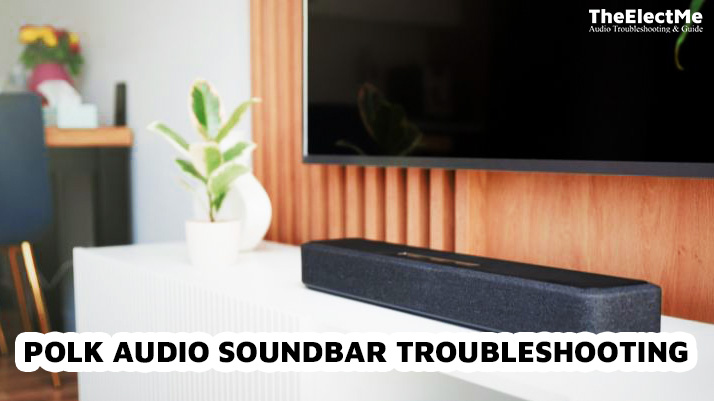How to record bass guitar? Recording bass guitar requires specific knowledge and techniques. Several methods effectively capture the distinctive sound of a bass guitar. Some musicians prefer to record directly into an audio interface, while others use a preamp pedal or an amp and a microphone.
Each method has its advantages and requires different equipment and settings.
The bass guitar is the band’s heart, bridging the gap between drums and string instruments. From rock bands to jazz ensembles, the bass guitar’s low, rumbling tones provide a crucial foundation.

So, let’s start with the equipment and tools you need to record your bass guitar.
Understanding the Bass Guitar
Recording a bass guitar is unlike recording any other instrument. Its low-frequency sound can be challenging to capture accurately. The bass’s rich, resonating tones can easily become muddied or lost during recording if not properly managed.
String vibrations are intense and can distort if not handled properly. Thus, understanding these unique properties is crucial for achieving a clean and balanced bass recording.
Equipment Needed for Recording
To record bass guitar effectively, certain equipment is essential:
- Audio Interface: This device converts the bass guitar’s analog signal into a digital one that your computer can process. It’s a crucial component in any home recording setup.
- Preamp Pedal: A preamp pedal can provide additional gain and tone shaping before the signal reaches the audio interface. It can produce a clear, crisp sound.
- Microphone: If you plan to record your bass amp, a quality microphone is necessary. Dynamic microphones are often preferred for their ability to handle the high sound pressure levels of bass amps.
- Bass Guitar and Amp: You’ll need a bass guitar and an amp. The type and quality of these will significantly impact your recorded sound.
- Cables: Quality cables are essential for connecting your equipment and transmitting sound without loss or interference.

Remember, the quality of your recording will only be as good as the weakest link in your equipment chain. Therefore, investing in good-quality gear can significantly impact your recordings.
Related: Can You Play A Bass Through A Guitar Amp? A Big Debate
Let’s move to recording techniques now.
How To Record Bass Guitar? 3 Methods You Can Try At Home
To record your bass guitar at home, here are three methods you can try:
Method No.1: Direct Input into an Audio Interface
Recording bass directly into an audio interface is popular due to its simplicity and effectiveness. Here’s a step-by-step guide on how to do it:
- Install a Digital Audio Workstation (DAW): First, you need a DAW installed on your computer. This software will allow you to record, edit, and mix your bass tracks.
- Connect your Bass to the Audio Interface: To connect your bass guitar, plug one end of the instrument cable into the output jack on your bass and the other into the input jack on the audio interface.
- Set the Gain Level: Check the gain level on your audio interface before recording. Play the bass at your desired recording volume and adjust the gain to keep the signal below the interface’s maximum meter. This will help prevent distortion.
- Use the Input Monitor: Most DAWs have an input monitor function. Use this to listen to the sound of your bass through the DAW before you start recording. This can help you fine-tune your tone before hitting the record.
- Record: Once you’re happy with your sound, hit the record button in your DAW and start playing.

Remember, the key to a successful recording is preparation. Ensure your bass is well-tuned and your playing technique is consistent.
Method No.2: Direct Recording Through a Preamp Pedal
A preamp pedal prepares the bass guitar signal for amplification or processing. It’s like a preamp that shapes your tone and adds gain to your sound before it reaches the audio interface.
Preamp pedals have controls like volume, gain, and EQ to customize your tone as desired.
Here’s how to use a preamp pedal for recording:
- Connect the Bass to the Preamp Pedal: Plug one end of your instrument cable into the bass output jack and the other into the preamp pedal input jack.
- Connect the Preamp Pedal to the Audio Interface: Use another instrument cable to connect the preamp pedal’s output to your audio interface’s input.
- Set the Gain Level on the Preamp Pedal: To achieve the desired recording volume, play your bass while adjusting the gain control of the Preamp pedal. This will help you achieve a strong and distortion-free signal for your recordings.
- Shape Your Tone: Use the EQ controls on the preamp pedal to shape your tone. This usually involves adjusting the bass, mid, and treble frequencies to your preference.
- Check Levels on the Audio Interface: Ensure the incoming audio signal to the interface isn’t too loud, as it may result in clipping or distortion. Adjust the input level on the interface if necessary.
- Record: Once you’re happy with your sound, start recording in your DAW.
Using a preamp pedal allows you to add character and warmth to your bass sound, giving you more control over your tone during the recording process.
Related: Bass Guitar Vs Electric Guitar:
Method No.3: Using an Amp and Microphone
Using an amp and microphone to record bass is a classic method that captures your amp’s unique tone, producing fantastic results. Here’s how to do it:
Correct Microphone Positioning
Positioning the microphone in front of your amp can drastically affect the sound you capture. Placing a microphone directly before your bass amp captures the “truest” sound with the most high-frequency content.
Placing the microphone off-axis (at an angle) can create a warmer tone with less high-frequency content. The ideal position relies on the desired sound and may involve some experimentation.

Distance from the Amp
Start with your mic about 3 feet out from the grill. This distance can provide a good balance between capturing the direct sound from the amp and the room’s acoustics. However, you can move closer for a more natural sound or further away to capture more of the room.
Microphone Choice
Your best bet is a dynamic microphone. Dynamic microphones are robust and can handle a bass amp’s high sound pressure levels. Condenser microphones can also be used.
Auditioning the Signal
Always use headphones to check the sound quality while positioning the microphone and during recording.
Understand what the microphone captures to optimize sound quality by adjusting its position and settings.
Record: Once you’re happy with the sound, hit record on your DAW and start playing.
Don’t be afraid to try different microphone positions and settings until you find what works best for your particular bass and amp.
Let’s move to the advanced recording techniques next.
Advanced Techniques for Recording Bass Guitar
To enhance your bass sound, try experimenting with the signal chain and applying various effects for added depth and texture. Here are some methods worth trying:
Using a Sansamp for Recording
SansAmp is a line of analog effect pedals produced by Tech 21. Designed to mimic tube amplifiers, they offer clean to heavily distorted tones. The SansAmp Bass Driver DI, in particular, is a popular choice among bassists for recording.
The SansAmp Bass Driver DI is a preamp, stompbox, and direct box. It can provide a wide range of bass amp sounds, from modern slap sounds to gnarly vintage tones or fuzzy distortion. Recording bass becomes easier with direct tone control, eliminating the need to mic an amp.
To record with a SansAmp, connect your bass to its input and route the output to your audio interface. You can then adjust the controls on the SansAmp to shape your tone before it hits the audio interface.

Utilizing Compression
Compression is a crucial tool when recording dynamic instruments like the bass guitar. It reduces your signal’s dynamic range, narrowing the gap between your performance’s loudest and softest parts. This helps make your bass tracks more consistent and easier to mix.
When recording bass, compression can be used to:
- Smooth Out Performance: A compressor can even out those levels if your playing is inconsistent, with some notes much louder than others.
- Add Sustain: Compression can increase the sustain of your bass notes, making them ring out longer.
- Prevent Clipping: Set an appropriate compressor threshold to prevent signal clipping and distortion.
- Shape Tone: Depending on the compressor and its settings, compression can also shape the tone of your bass, adding warmth or punch.
While compression can be extremely helpful, it’s also easy to overdo. Too much compression can make your bass sound lifeless and flat. Start with a subtle amount of compression and adjust to taste.
Conclusion – How To Record Bass Guitar?
How to record bass guitar? You can record bass guitar using a direct input method or by miking up an amp. Advanced techniques like compression and SansAmp pedals can further enhance your recordings.
Always check for clipping, adjust levels, and use headphones while recording to ensure the best sound quality. With these tips in mind, you’ll be on your way. If you face trouble while recording your bass guitar, don’t hesitate to seek help from a professional.
They can guide equipment, settings, and techniques specific to your setup and goals. Experiment with different methods and effects to find the best way to record your bass guitar sound.



